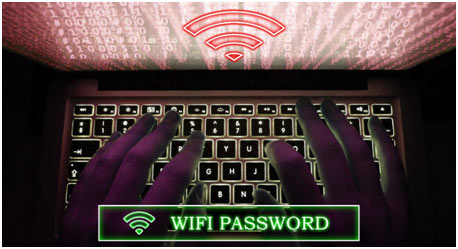How to find out how many devices are connected to my Wi-Fi?
Checking the health of your home internet most likely isn’t on your to-do list every morning. But if your internet is acting funny? Has your internet speed decreased? Or are you just worried that someone might have accessibility to your Wi-fi network? These are all excellent reasons to do a fast check of your Wi-Fi connections and, if essential, beef up security to maintain unknown entities from bogarting your bandwidth.
While sharing your Wi-Fi with a stranger may appear unlikely, safe, or both, doing so can drain your data transfer, and slow your connections, and if you have actually numerous gadgets set up to share access to on your network, it is even feasible that your secret guest can access those details as well. This results in the frequently asked questions: “Exactly how do I find who is on my Wi-Fi?”
House gadgets such as laptops, mobile phones, tablets, computers, video gaming consoles, smart home assistants, light bulbs, etc. are all linked to your wireless network. Recognizing the number of gadgets on your Wi-Fi network can assist you to identify what is reducing your speeds as well as if there are unwanted devices freeloading on your network. Here are a couple of actions for you to locate who is lurking on your Wi-Fi?
Find Who Is Connected to Wi-Fi with Your Router
Step1: Find Your Router Login Details
Your best option is to check your wireless router for login information. You can do it in simply a few mins as well as do not require to download and install any kind of third-party applications to execute the check.

This will be easy if you have direct access to your router. Generally, on the back of your router, details such as device name, model, router login IP, and password, elsewise on the packaging. If you don’t know, then you can Google the make and model of your router.
And is possible to find your router logins and password if not changed from defaults. Usually, most routers have a default IP address of 192.168.0.1 or 192.168.1.1. If this one also does not work, then there are other ways to find your router login details.
1. By Using Command Prompt
The very easy method to do it on Windows is by using the Command Prompt. When you launch the utility, type the ipconfig command and press Enter on your keyboard. From there, you’ll discover your IP address under Default Gateway.

2. By Network Settings
In your Network settings, pick Wi-Fi from the left-side menu and click Advanced in the bottom-right corner of the window. Then select the TCP/IP tab in the following window. There you’ll discover your IP address under Router.
Step 2: Login to the Router
Login to your router, utilizing the login IP/admin/password you found in Step number 1. Start by typing the login IP right into any type of web browser address bar. Enter the admin and password- again will be on the router someplace or online.
Step 3: Discovering the List of Connected Devices
When you are inside the router, you are searching for the Devices or Connected Devices or Wireless Clients menu, which shows a listing of connected gadgets, with their MAC addresses (unique physical identifiers).

Some routers will have all the gadgets detailed on the main page under Wi-fi. On some routers, attached devices will be displayed under the DHCP Clients List under DHCP Setups. Others may display it under Attached Gadgets. There are other routers that additionally display this information at a look under Wireless Setup, specifically if Double Band is enabled.
Regardless of what router you’re utilizing, the list of linked tools normally uses the very same information. You’ll see some kind of table that includes the hostname and MAC address for every single gadget on the list.
When you see a device, you do not identify, your very first intention will probably be to boot it off your network. However, prior to you do that, see to it to check whether it’s really a stranger feeding off your Wi-Fi, or among your tools that you simply didn’t recognize.
Scan Your Wi-Fi Network with Software Applications on Your Computer
The perfect way to check for connected devices will generally be to utilize your router’s web interface. However, some routers may not provide this feature, so you may wish to try a scanning software application instead.

This is a piece of software working on your computer that will check the Wi-Fi network you’re linked to for active gadgets as well as listing them. Unlike router web interface tools, such scanning tools have no way of listing tools that have been attached, but which are currently offline. You’ll only see online devices.
Disconnecting Unwanted Devices from Your Wi-Fi
There are in fact many ways you can disconnect undesirable devices from your Wi-Fi.
- First of all, change your Wi-Fi password and use strong passwords to avoid any type of attack.
- Make certain you also change the router login admin/password too though, to stop the cyber attack from accessing control of the router.
- If your router is broadcasting both a 2.4 GHz and 5 GHz signal, and also you can recognize by the MAC address which devices you want to remove, you can simply disable the band it’s on, as well as only offer the password for the other remaining band to the devices you intend to enable on the network.

